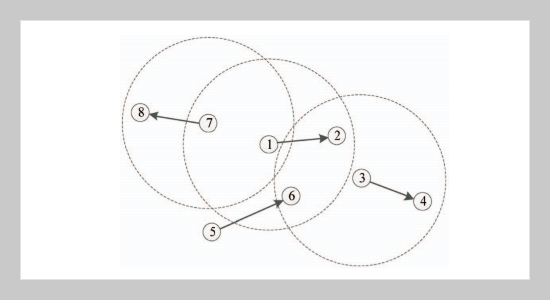REFERENCES
- [1] Sha, M., Xing, G. L. and Zhou, G., “C-mac: Modeldriven Concurrent Medium Access Control for Wireless Sensor Networks,” INFOCOM 2009, IEEE, pp. 18451853 (2009). doi: 10.1109/INFCOM.2009.5062 105
- [2] Huang, P., Xiao, L., Soltani, S. and Mutka, M. W., “The Evolution of MAC Protocols in Wireless Sensor Networks: A Survey,” Communications Surveys & Tutorials, IEEE, Vol. 15, No. 1, pp. 101120 (2013). doi: 10.1109/SURV.2012.040412.00105
- [3] Dunlop, J. and Cortes, J., “Co-design of Efficient Contention MAC with Directional Antennas in Wireless Sensor Networks,” Wireless Communications and Mobile Computing Conference, 2008. IWCMC’08. International, pp. 383388 (2008). doi: 10.1109/IWCMC. 2008.67
- [4] Karapistoli, E., Gragopoulos, I. and Tsetsinas, I., “A MAC Protocol for Low-rate UWB Wireless Sensor Networks using Directional Antennas,” Computer Networks, Vol. 53, No. 7, pp. 961972 (2009). doi: 10.1016/ j.comnet.2008.12.006
- [5] Incel, O. D., van Hoesel, L. and Jansen, P., “MC-LMAC: A Multi-channel MAC Protocol for Wireless Sensor Networks,” Ad Hoc Networks, Vol. 9, No. 1, pp. 7394 (2011). doi: 10.1016/j.adhoc.2010.05.003
- [6] Liu, Z. W. and Wu, W., “A Dynamic Multi-radio Multi-channel MAC Protocol for Wireless Sensor Networks,” Communication Software and Networks, 2010.ICCSN’10. Second International Conference on, pp. 105109 (2010). doi: 10.1109/ICCSN.2010.19
- [7] Ramanathan, R. and Rosales-Hain, R., “Topology Control of Multihop Wireless Networks using Transmit Power Adjustment,” INFOCOM 2000. Nineteenth Annual Joint Conference of the IEEE Computer and Communications Societies. Proceedings. IEEE, pp. 404 413 (2000). doi: 10.1109/INFCOM.2000.832213
- [8] Li, N. and Hou, J. C., “Topology Control in Heterogeneous Wireless Networks: Problems and Solutions,” INFOCOM 2004. Twenty-third Annual Joint Conference of the IEEE Computer and Communications Societies, pp. 112 (2004). doi: 10.1109/INFCOM.2004. 1354497
- [9] Li, L., Halpern, J. Y. and Bahl, P., “Analysis of a Conebased Distributed Topology Control Algorithm for Wireless Multi-Hop Networks,” Proceedings of the Twentieth Annual ACM Symposium on Principles of Distributed Computing, pp. 264273 (2001). doi: 10. 1145/383962.384043
- [10] Yang, G. Y. and Guan, X., “A Concurrent MAC Protocol Based on Location Information in Wireless Sensor Networks,” Computer Modelling and New Technologies, Vol. 18, No. 2, pp. 114119 (2014).
- [11] Ma, Q., Liu, K. B. and Miao, X., “Opportunistic Concurrency: a Mac Protocol for Wireless Sensor Networks,” Distributed Computing in Sensor Systems and Workshops (DCOSS), 2011 International Conference on, pp. 18 (2011). doi: 10.1109/DCOSS.2011.5982219
















